OUTCROP
Newsletter of the Rocky Mountain Association of Geologists
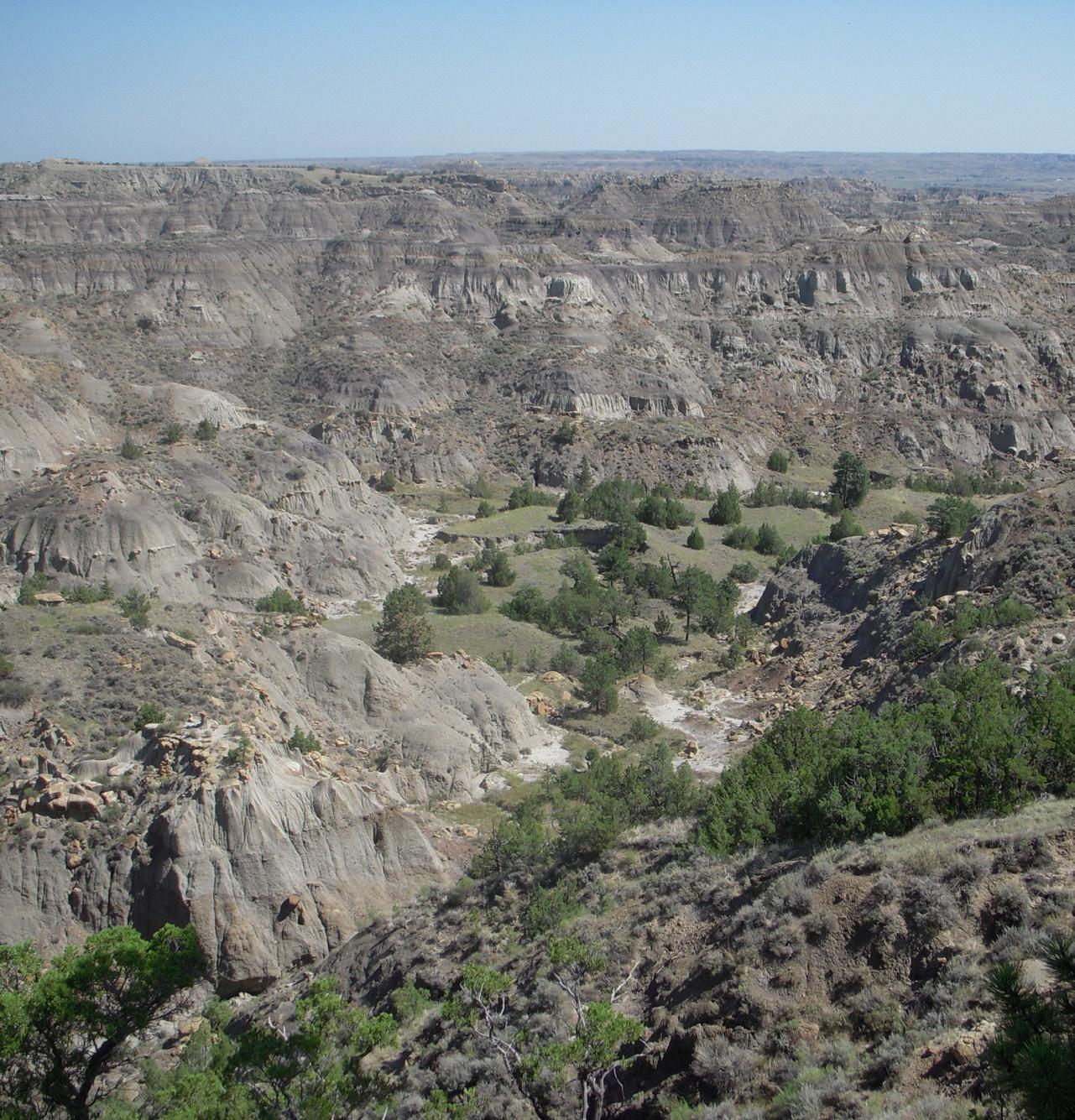

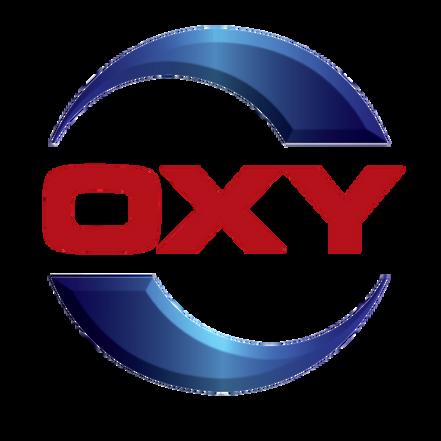
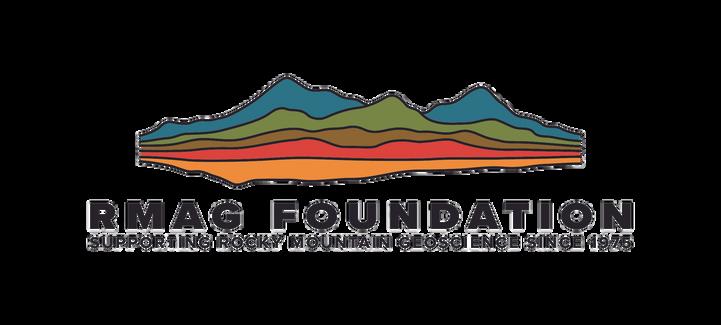
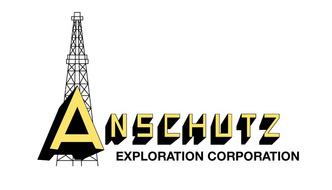

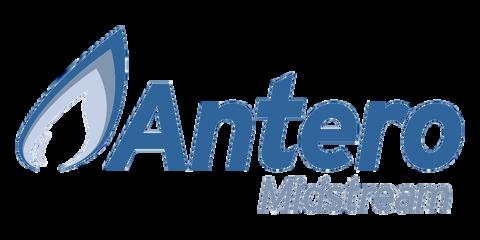




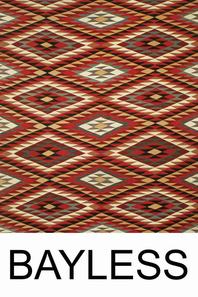













of the Rocky Mountain Association of Geologists
730 17th Street, B1, Denver, CO 80202 • 720-672-9898
The Rocky Mountain Association of Geologists (RMAG) is a nonprofit organization whose purposes are to promote interest in geology and allied sciences and their practical application, to foster scientific research and to encourage fellowship and cooperation among its members. The Outcrop is a monthly publication of the RMAG.
PRESIDENT
Matthew Bauer matthew.w.bauer.pg@gmail.com
PRESIDENT-ELECT Sandra Labrum slabrum@slb.com
1st VICE PRESIDENT
Nate La Fontaine nlafontaine@sm-energy.com
1st VICE PRESIDENT-ELECT Rachael Czechowskyj sea2stars@gmail.com
2nd VICE PRESIDENT Ali Sloan ali@sloanmail.com
2nd VICE PRESIDENT-ELECT Lisa Wolff lwolff@bayless-cos.com
SECRETARY Drew Scherer latirongeo@gmail.com
TREASURER
Astrid Makowitz astridmakowitz@gmail.com
TREASURER-ELECT
Walter Nelson wnelson@integratedenergyresources.com
COUNSELOR
John Benton jbenton@haitechinc.com
Rates and sizes can be found on page 50. Advertising rates apply to either black and white or color ads. Submit color ads in RGB color to be compatible with web format. Borders are recommended for advertisements that comprise less than one half page. Digital files must be PC compatible submitted in png, jpg, tif, pdf or eps formats at a minimum of 300 dpi. If you have any questions, please call the RMAG office at 720-672-9898.
Ad copy, signed contract and payment must be received before advertising insertion. Contact the RMAG office for details.
DEADLINES: Ad submissions are the 1st of every month for the following month’s publication.
The Outcrop is a monthly publication of the Rocky Mountain Association of Geologists
DESIGN/LAYOUT: Nate Silva | n8silva.com
EXECUTIVE DIRECTOR
Bridget Crowther bcrowther@rmag.org
LEAD EDITOR
Danielle Robinson danielle.robinson@dvn.com
CONTRIBUTING EDITORS
Elijah Adeniyi eadeniyi@slb.com
Nate LaFontaine nlafontaine@sm-energy.com
RMAG CODE OF CONDUCT
RMAG promotes, provides, and expects professional behavior in every engagement that members and non-members have with the organization and each other. This includes respectful and inclusive interactions free of harassment, intimidation, and discrimination during both online and in-person events, as well as any content delivered by invited speakers and instructors. Oral, written or electronic communications that contain offensive comments or demeaning images related to race, color, religion, sex, national origin, age, disability, or appearance are not appropriate in any venue or media. RMAG reminds members of the diversity and mission statements found on our website. Please direct any questions to staff@rmag.org




2025 RMAG Summit Sponsorship Packet
Lead Story: Identifying Fossil Poo from Non-poo: A Case Study
RMAG On the Rocks: Glenwood Springs And Caverns Field Trip
RMAG June 2025 Board Of Directors Meeting
President’s Letter
Hybrid Lunch Talk: William R. Drake
Hybrid Lunch Talk: David Hume In The Pipeline
Welcome New RMAG Members!
Outcrop Advertising Rates
RMAG Summit Sponsors 4 RMAG Networking Events 11 2025 On-The-Rocks Field Trips
RMAG Coffee Hour 19 RMAG Family Hike
RMAG Happy Hour 23 RMAG Golf Tournament
25 RMAG Short Course: Advances And Caveats In Oil-Prone Source Rock Geochemistry Based On Pyrolysis
30 RMAG Volleyball Get Together
47 RMS APPG Annual Meeting
Badlands near Glendive, Montana containing Hell Creek fossils. Photo by Ryan Allen


MEMBERS
EVENT ATTENDEES
WEBSITE VISITORS
OUTCROP READERS
EMAIL SUBSCRIBERS
NETWORKING EVENTS
CONTINUING EDUCATION EVENTS
FIELD TRIPS
COMMUNITY CONTACTS IN 2024YOUR SUMMIT SPONSORSHIP DOLLARS SUPPORTED: 1,200 1,200 8,000 8,000 5,000 4,000 23 13 10



October 30, 2024
Geoscience Community:
We sincerely appreciate the support every Summit Sponsor and Event Sponsor provided over the past year. Your contributions are vital to the success of the Rocky Mountain Association of Geologists (RMAG).
In 2024, the RMAG was proud to host a dynamic lineup of events, including the CCS Workshop, which provided an in-depth look at advancements in carbon capture and storage. Members explored the beauty and geological wonders of the Colorado Rockies with ten diverse field trips and shared our passion for geoscience with students across the region through classroom visits and community festivals. Additionally, we fostered connections among members through monthly lunches, coffees, happy hours, and our annual Golf Tournament.
Looking ahead to 2025, we are excited about new opportunities for RMAG. Your sponsorship will help RMAG realize a robust calendar of continuing education opportunities, an exciting season of field trips, high-impact short courses, and a dynamic lineup of luncheon speakers. In April 2025, we look forward to the North American Helium & Hydrogen Conference, building on the success of our 2023 North American Helium Conference. Your sponsorship empowers RMAG members to impact the next generation at outreach events throughout the community and provides invaluable networking opportunities for the geoscience community. Furthermore, your financial support plays a crucial role in our publication efforts, which include the monthly Outcrop newsletter and the quarterly Mountain Geologist journal.
In recognition of your financial commitment to supporting geoscience in the region we recognize our sponsors through in-person signage, advertising on our website, publications, and social media promotions leading up to each event. With a LinkedIn group of almost 3,000 members, we ensure our sponsors are visible to the geoscience community for both virtual and in-person events.
Thank you to our current Summit Sponsors; we look forward to your continued support in 2025. For those considering sponsoring, we encourage you to explore the many benefits included at each sponsorship level and consider how you can promote geoscience in the Rockies. If an annual sponsorship doesn’t suit your company’s needs or if you wish to sponsor a specific event, please inquire about our single-event sponsorship opportunities. Feel free to reach out to our staff with any questions about sponsorship at bcrowther@rmag.org or by phone at 720- 672-9898 ext. 102.
On behalf of the RMAG staff, volunteers, and myself thank you all for your continued support, and we look forward to connecting with you in 2025.
Sincerely,
Matthew Bauer
Bridget Crowther 2025 RMAG President RMAG Executive Director



All sponsor benefits event tickets follow RMAG event registration deadlines. All benefits end 12 months after registration.
Platinum Sponsor
Gold Sponsor
Silver Sponsor
Summit Sponsorship benefit term is for 12 months! Specify type of payment on signed form, and send logo and advertisements to staff@rmag.org
Company:
Company Representative:
Address:
City: State: Zip Code:
Phone: Email:
Payment Method: Credit Card ACH Check
Credit Card Information:
Select Card: AMEX Mastercard VISA Discover
Name as it appears on Credit Card:
Credit Card #:
Expiration Date:
Signature:
Security Code:
ACH: contact the RMAG office at staff@rmag.org for directions.
Mail Checks payable to RMAG:
Rocky Mountain Association of Geologists (RMAG)
730 17th Street, B1 Denver, CO 80202
RMAG events are subject to change. Cancellation or rescheduling of events does not give the sponsor the right to refund. Summit Sponsors will receive benefits at any new events added into the RMAG schedule.
Thank you for your generous support!
P: (720)672- 9898 staff@rmag.org www.rmag.org

730 17th Street, B1 Denver, CO 80202
By Drew Scherer, Secretary flatirongeo@gmail.com
The RMAG Board of Directors convened virtually on June 18th for their monthly meeting, with strong attendance and plenty of momentum across the organization. RMAG staff shared encouraging news, reporting solid turnout at recent luncheons, happy hours, and events, as well as a modest uptick in membership numbers. Financially, while the organization experienced a slight operating loss last month, overall net revenue increased significantly thanks to favorable performance in the investment portfolio, offsetting those losses with a gain for the month.
The Continuing Education Committee announced that there will be no luncheon in July, but events will resume in August. The committee is actively planning workshops and technical events for the rest of the year and is in the early stages of brainstorming
a conference for 2026. Meanwhile, the Membership Committee reported a successful launch to the new Front Range Hiking Passport series, which kicked off May 31st at Matthew Winters Park. Upcoming hikes are scheduled for July 26th and August 9th, and additional summer activities include a sand volleyball outing in mid-July and the return of the second annual Pedals & Peaks mountain bike outing, which will take place August 16th at the Grand Hogback trail system in Rifle.
The Publications Committee is preparing a series of CO2-focused articles to align with the Upcoming North American CO2 Summit taking place in Denver later this year. They are also planning to compile recaps from recent and upcoming On The Rocks trips for The Outcrop and have six articles in progress for the late summer release of The Mountain Geologist. On the outreach front, the Geoscience Outreach committee reported strong participation at recent events and plans to announce this year’s Teacher of the Year award recipients in August.

The On The Rocks committee has rescheduled the Dotsero Volcano field trip for September 14th and will resume their field programming later this summer with a tour of the USGS Core Library and Ice Core Facility on August 15th.
As always, RMAG continues to thrive through the dedication of its volunteers and the enthusiasm of its membership. We look forward to seeing many of you at our upcoming events and out in the field.


15 AUGUST
16 AUGUST

23-24 AUGUST
Join RMAG for a tour of the NSF Ice Core Facility and the USGS Core Research Facility We’ll see how the cores are stored, discuss the collection and even examine a core before an optional lunch.
This moderate to challenging mountain biking trail will take you through stunning terrain nestled against the Grand Hogback, offering a unique opportunity to explore the region's fascinating sedimentary geology. As you ride, we'll discuss key formations such as the Wasatch, Williams Fork, Mancos, and Morrison-Entrada, along with the structural features and basin history of the area
Salida-based geologist Tom Karnuta will guide us through the jaw-dropping geology between Salida and Cañon City We will see Pleistocene terraces, midTertiary volcanic rocks, Paleozoic strata from Pennsylvanian Sangre de Cristo Formation down to the Ordovician Manitou Dolomite (resting unconformably on Precambrian rocks), and Precambrian igneous and metamorphic rocks ranging in age up to 1 7-1 8 billion years old
14
SEPTEMBER
* Reschudeled date
19-21 SEPTEMBER
4-5 OCTOBER
Visit the Dotsero Crater is the youngest and only “active” (erupted less than ~10,000 years ago) volcano in Colorado It likely formed around 2200 ± 300 BC in a single eruption that included the formation of a crater, scoria cones, a lava flow, and a maar
Examine the region’s fascinating geologic history, covering everything from Paleozoic to Cenozoic stratigraphy, Laramide to Oligocene volcanism, striking unconformities, and Pleistocene glaciation to its famous hot springs all set against the stunning backdrop of late September’s vibrant fall foliage
Located in the Comanche Grasslands along the Purgatoire River, this tracksite ("Dinosaur Lake") is considered the largest continuously mapped dinosaur fossil footprint assemblage known in the Jurassic Morrison formation and contains some of the world's longest trackways.
Dates subject to change View website for additional info


By Matthew Bauer
Fellow Members,
Have you ever received legacy CAD, GIS, or tabular data from a client, only to find the coordinates are in an unknown coordinate reference system (CRS)? I’ve encountered this many times—often loading the data repeatedly while guessing which CRS might fit.
To streamline this process, I’ve started using a small Python function that helps automate CRS identification. It converts the mystery coordinates to WGS 84 and returns a geopandas.GeoDataFrame. You can then load this into your GIS platform of choice,
zoom to the suspected area of interest, and compare the location to known features to help identify the correct CRS.
Optionally, if you provide coordinates in WGS 84, the script can exclude CRS definitions whose area of use doesn’t contain your point, helping eliminate irrelevant options and speeding up the process.
I hope this helps next time you’re handed spatial data without sufficient metadata.
Stay curious and be good to people,
—Matthew Bauer


The code shown here has been stored online for easy access. We have provided both a python file, and a plain-text document. These files can be accessed here.
BY RYAN ALLEN, M. A.
Paleontology is the study of extinct life through their fossils, but not every living thing becomes a fossil. This is true if one were to track roadkill on the side of the road or an autumn leaf pile before winter. Instead, specific circumstances are often required to preserve an organism in order for it to become a fossil, usually through rapid burial, or preservation in a protective substrate such as tree sap that becomes amber, tar in tar pits, and, among the most unusual, feces.
Many people are surprised that fossilized feces (or coprolites) can preserve plants and animals that might not otherwise be preserved[1-2]. The digestive residues and muck of feces may preserve indigestible bits of plant tissue, bone, etc. and act as a protective shield if the feces are buried fast enough to become a coprolite. Coprolites are also the end product of living, breathing organisms, giving paleontologists insights into the dietary and digestive behavior of the defecator (who is often inferred based on the coprolite’s size, shape, and paleontological context).
Among the best-preserved coprolites are those produced by carnivores because animal bones and soft tissues usually have higher levels of phosphorus
than sedimentary rock[3-4]. Not only that, bacteria can decompose the feces and facilitate lithification through phosphatization[4-5]. Phosphorus is a limiting nutrient in the environment, and it is particularly uncommon in clastic terrestrial (i.e., non-marine) sedimentary rocks[6]. Therefore, phosphorus has been used as a convenient criterion to help identify certain lithified masses (i.e., concretions) as coprolites.
But relying solely on phosphorus to identify coprolites may no longer be tenable in light of recent discoveries. In Australia, at the Riversleigh World Heritage Site, phosphatic concretions with well-preserved plants and insects were determined to not have a direct fecal origin[7]. In southern Colorado in a place called the Corral Bluffs, over 200 phosphatic concretions have been found that contained well-preserved remains of primitive mammals, crocodilians, and turtles[8]. It has been determined that they too could not have had a fecal origin based on their size and preserved elements (i.e., skulls, shells, skeletons, etc.).
Considering the aforementioned research complicating efforts to differentiate coprolites from non-coprolites, the focus of this work will be to determine whether a phosphatic mass from Montana,

FIGURE 1: The locality, stratigraphy, and appearance (before and after discovery) of the phosphatic concretion with crocodilian fossil remains. It was found in Garfield County, Montana south of Fort Peck Reservoir (a), and according to the lectostratotype of the Hell Creek Formation (less than three miles west of the site), it would have been in the upper member of the Flag Butte Unit[12], 15-20 meters below the K-Pg boundary (b). Piece 1 represents the skullbearing piece of the concretion, which is absent in (c) but reattached in (d).
found south of Fort Peck Reservoir and north of Jordan (Fig. 1a), had a fecal or non-fecal origin[9].
Our story begins in 1997 when avid fossil hunter, Wayne Smiglewski, was searching for fossils on a ranch owned by the Binion Family. Over many years, he had found and collected numerous interesting fossils with permission on private land, particularly dinosaurs. It was convenient that he was targeting one of the most famous and fossil-rich deposits in North America, namely the Hell Creek Formation.
Named after the Hell Creek Valley in 1907, it would become famous for its dinosaurs, including movie favorites such as Tyrannosaurus and Triceratops, as well as numerous remains of the associated flora and fauna. Indeed, beneath the feet of these dinosaurs were smaller creatures that nearly all have living relatives in the Everglades of Florida, including crocodilians, turtles, amphibians, and various fish, among others[10]. The environment at the time was akin to the Everglades, being a swampy, fluvial environment of rivers and backwater habitats that prograded southeast toward a retreating Western
Interior Seaway[11]
Nowadays, the swamps and tropical vegetation have long been replaced by the dry, barren badlands, and it was here that Wayne made an unusual discovery. It was on a hill about 15-20 meters below the infamous K-Pg boundary that marked the end of the Mesozoic[12] (Fig. 1b). There he found a nearly 2-liter concretion (shaped like a circular, flattened loaf of bread) that was harder and of a different color from the surrounding sediment within a mudstone layer (Fig. 1c). No other concretions or structures were found, nor had Wayne seen anything like it in his years of searching the Hell Creek Formation.
The biggest reason it was unusual was because Wayne noticed a handful of black projections (later identified as teeth) and a snout-like shape poking out from one end of the concretion. Because the concretion was broken, he could also see a dark layer that contained numerous, black pieces of fossil bone within. It was for these reasons that he collected the concretion in its entirety (Fig. 1d), along with some sedimentary samples.
With the aid of a handful of experts, Wayne would later identify the teeth as belonging to a crocodilian. However, it was from a small one, with the piece of the concretion containing the skull measuring about 11 cm x 6.5 cm x 3.5 cm (Fig. 2a). Furthermore, it was buried alongside numerous fossil fragments in a concretion that seemed to be composed of phosphatic rock. The story seemed obvious at first: Wayne had found a fossilized coprolite containing the remains of a baby crocodilian, who was the unfortunate victim of a large predator.
But to confirm his finding, Wayne required further expertise, which led him to contact paleontologist Dr. Karen Chin. Not only is Dr. Chin one of the foremost experts on the study of coprolites, but

2: Images of the skull-bearing piece of the phosphatic concretion. (a) Dorsal view before preparation. (b) Dorsal view of neutron CT digital reconstruction of skeletal elements outlined by concretionary piece. Primary cranial material is blue, teeth are yellow, limb bones are green, and probable distal phalanx (i.e., claw) is red. Dotted box connected to (c) denotes left lateral view of specimen after preparation, with arrows showing exposed teeth.










she had personally published on the discoveries of two large coprolites that she inferred were made by relatives to Tyrannosaurus[13-14]. Dr. Chin and Wayne agreed to leave the specimen within the former’s purview at the CU Museum of Natural History, and for a time it sat on the backburner until I, Ryan Allen, took up the project as part of a thesis in 2018.
Dr. Chin and I shared a common interest in paleobiology (i.e., the study of the life and biology of extinct organisms), especially after I took her class on the subject as an undergraduate. My job with Dr. Chin was to shed light on the origin of the concretion by answering the following questions: (1) what was inside the skull-bearing piece of the concretion, and (2) what was the concretion made of geochemically? To answer the first question, we called upon Dr. Joseph Bevitt at the Australian Nuclear Science and Technology Organisation. He is an expert in neutron scanning, which is similar to X-ray CT scanning except that the target is scanned with a neutron beam instead of X-rays. Dr. Bevitt gave us a digital, 3-D model that we processed with Dragonfly® visualization software. I spent a tedious but rewarding 160 hours to digitally carve out the fossil from the rock (Fig. 2b).
As for the second question, we did three things. First, we extracted a handful of pieces from the concretion of the fossil material, the groundmass, and the sedimentary samples Wayne had collected around it. We then ground these down and sent them to a lab to get the percentages of their geochemical compositions. Second, we made a small slice on a different part of the concretion that was scanned with an electron microprobe, which maps the distribution of elements at a millimeter scale (Fig. 3a-b). Third, we called upon Dr. Mike Zawaski (then at the Texas A&M University Department of Geology and Geophysics) to scan another, larger slice of our concretion with X-ray fluorescence to map the distribution of elements at a centimeter scale (Fig. 3c-d)
Finally, we wanted to be more certain about our neutron data by digging out our skull from the rock as much as we could, and we were able to do so through the generous patrons of the RMAG, Dudley
and Marion Bolyard. I became the 2021 recipient of their generous scholarship in their name, and it allowed me and my team to confirm that our digital observations were in line with the actual fossil (Fig. 2c)
All these investigations would help us to answer our major question: was our concretion a fecal coprolite or a non-fecal phosphatic concretion?
Through our analyses, our most important geochemical observation was that the concretion was predominately composed of calcium phosphate. As evidenced by our elemental maps (Fig. 3) and percentages, calcium phosphate was highest in the bones, and a little less in the groundmass. This is also observed in fecal coprolites. However, after compiling the literature, other non-fecal phosphatic concretions, usually from marine settings, were found to have comparable amounts of phosphorus. Because of this, we could not use phosphorus to differentiate our phosphatic concretion from those produced through fecal or non-fecal processes. Instead, it would be the distribution and degree of preservation of the fossil material within the groundmass that informed us most about their origins. Through our CT scans and preparation work, we observed that the bones were concentrated in a horizontal band at the center of the concretion (Fig. 3c). This is different from coprolites because digestive remains would have been mixed in the gut of the animal who ate and defecated the prey, causing them to be mixed throughout the fecal groundmass[13-14]. The degree of preservation of the fossil remains was another difference, because whereas dietary residues in feces are normally broken apart and difficult to identify, our fossil remains were better preserved (Fig. 2b). Most obviously, a relatively intact skull was present, including much of the snout and left jaw with all its teeth (Fig. 2c). However, we were surprised to discover postcranial bones from other parts of the body, including a likely femur, tibia, fibula, and claw. Finally, the contrast between our specimen and coprolites was further reinforced after we observed the Corral Bluffs specimens mentioned earlier, which were non-fecal in origin and looked almost exactly like our specimen. These observations


Florissant Fossil Beds & Fossil D ig
Florissant Fossil Beds & Fossil D ig

FIGURE 3: Elemental maps of phosphatic concretion. Left column figures show a thin section (a) and electron microprobe elemental map of phosphorus (b), with outlined box rotated 90 degrees clockwise (a), and lighter colors in (b) indicating higher concentrations of phosphorus. Right column figures show a slab of the concretion (c) and micro-XRF map of phosphorus (d), with area within dotted line (c) representing the horizontal bone layer in the vertical center of the concretion, and warmer and cooler colors in (d) representing higher and lower concentrations of phosphorus respectively.
led us to one major conclusion. Our coprolite hypothesis stunk, and our phosphatic concretion was non-fecal.
If our specimen was not a coprolite, then how did our skull become mineralized in a concretion? As was mentioned earlier, a coprolite interpretation is easier to envision. Feces from a large carnivore (perhaps a tyrannosaur, based on our concretion’s volume) would be composed of calcium and phosphorus from the digested bone, soft tissue, and subsequent bacterial phosphatization packaged in a singular mass (Fig. 4). However, these same ingredients are also available in a carcass
unconsumed by predators. Experimental evidence has shown that carcasses can become covered by bacteria that form byproducts that can facilitate their phosphatization[15-18].
The story may thus have gone as follows (Fig. 4). The crocodilian likely died in a low-energy fluvial setting, and its carcass bloated, decomposed, and its bones sank and came to rest one on top of the other. This is similar to decay experiments done on modern juvenile crocodiles, whose bones’ arrangement upon sinking mirrored our own specimen’s skeletal distribution[19]. The carcass was buried soon thereafter since the skull is relatively intact with no obvious evidence of scavenging. At some point, bacteria infested the carcass and promoted phosphatization.


r i n k


FIGURE 4: The two primary hypotheses for the origin of the crocodilian-bearing phosphatic concretion. Fecal origin scenario: (1) death by predation or scavenging, (2) transport away from feeding site, (3) packaging within a fecal mass, and (4) burial, with phosphorus supplied by fecal matter leading to mineralization of feces mediated by bacterial metabolism. Non-fecal origin: (1) death by natural causes, (2) minimal or no transport from death site, (3) deposition in low-energy fluvial setting with bones disassembled, whether through bioturbation or “bloat and float,” and (4) burial and flattening of carcass, with phosphorus supplied by carcass tissues and metabolic activity of associated bacteria, leading to bacterially-mediated concretionary growth nucleating from soft tissues.


THANKS TO OUR SPONSORS









Over time, the phosphatic byproducts and the natural replacement of organic matter with minerals took place. The carcass thus acted as a nucleus by which mineral precipitation radiated out and eventually formed the spherical concretion. It is perhaps a good thing that the crocodilian was not eaten and broken apart because its degree of preservation allows us to identify the deceased, in this case. The crocodilian has a U-shaped snout, comparatively large teeth in the fifth position of its maxillae, and rounded (i.e., globidont) teeth in the back of its mouth, among other features. This is most in line with a species of crocodilian in the Hell Creek Formation called Brachychampsa montana[20] , whose closest relatives include modern alligators. Measuring from the tip of the snout to approximately where the back of the head was[21], we could estimate that it was probably somewhere between 5590 cm in total body length. Finally, using these body lengths compared to modern crocodilians[22-23], we estimated that our juvenile was less than five years
old, and probably between 1-3 years old. This has implications for its life history because the juvenile may have used its rounded back teeth to crush small, hard-shelled prey like mollusks, and it most likely did so in shallow-water habitats based on our fossil’s locality and how modern crocodilians survive in similar habitats in their first few years of life.
Some might be less than enthused that this specimen does not represent the life-and-death struggle of a baby crocodilian against a predator. However, our specimen is important because it allowed us to test our hypothesis: whether a given fossil-bearing phosphatic concretion is a coprolite or not. We thus established further criteria for future research on how to more definitively identify such concretions as fecal or non-fecal in origin. It is no longer just about whether a given concretion is phosphatic, but also based on criteria like the completeness and distribu tion of the fossils inside.

about interactions between predator and prey and the oral and digestive process ing of organisms, non-fecal phosphat ic concretions may contain more com plete remains. Together, they both can contribute important information on the paleoecology of certain fossil local ities that might not otherwise be pre served, and differentiating the two can lead to more accurate paleoenvironmen tal interpretations.
pects of our research, such as the usage of neutron CT scanning, or the rarity and taxonomic implications of our juvenile crocodilian. Our findings may be read more in-depth in our open-access arti cle in
volved were an indelible part of the proj ect, and I am proud to have worked with them as part of my team. We are once again grateful to RMAG patrons, Dudley and Marion Bolyard, whose generosity helped contribute to answering this pa leontological mystery. We hope to have




Update your thinking, interpretations, and modeling of oil-prone source rocks in your petroleum system, play, or prospect.
In this class explore updated interpretations, encourage open discussion, and highlight the evolving understanding of oil generation and expulsion.
September 22 and 23, 2025
8am to 4pm
pushed the field of paleontology forward just a little bit more as future coprolites and fossil-bearing phosphatic concretions are found that will elucidate our planet’s past ecosystems.
1. Qvarnström, M., Wernström, J. V., Piechowski, R., Tałanda, M., Ahlberg, P. E., & Niedźwiedzki, G. Beetle-bearing coprolites possibly reveal the diet of a Late Triassic dinosauriform. R. Soc. open sci ., 6. http://dx.doi.org/10.1098/rsos.181042 (2019).
2. Chin, K. The paleobiological implications of herbivorous dinosaur coprolites from the Upper Cretaceous Two Medicine Formation of Montana: Why eat wood? Palaios , 22, 554-556. https:// doi.org/10.2110/palo.2006.p06-087r (2007).
3. Chin, K. Analyses of coprolites produced by carnivorous vertebrates in The Fossil Record of Predation (eds. Kowalewski, M. & Kelley, P. H.) 43-49 (Paleontol. Soc. Spec. Papers). https://doi. org/10.1017/S1089332600001042 (2002).
4. Hollocher, K. T., & Hollocher, T. C. Early processes in the fossilization of terrestrial feces to coprolites, and microstructure preservation in Vertebrate Coprolites (eds. Hunt, A. P., Milàn, J., Lucas, S. G., & Spielmann, J. A.) 79-92 (New Mex. Mus. of Nat. Hist., 2012).
5. Hollocher, T. C., Chin, K., Hollocher, K. T., & Kruge, M. A. Bacterial residues in coprolite of herbivorous dinosaurs: Role of bacteria in mineralization of feces. Palaios , 16, 547-565. https://doi. org/10.2307/3515628 (2001).
6. Brinck, J. W. World resources of phosphorus in Phosphorus in the environment: Its chemistry and biochemistry (eds. R. Porter and D. W. FitzSimons) 23-48 (John Wiley & Sons, Inc.). https://doi. org/10.1002/9780470720387.ch3 (1977).
7. Arena, D. A. Exceptional preservation of plants and invertebrates by phosphatization, Riversleigh, Australia. Palaios , 23, 495-502. https://doi.org/10.2110/palo.2006.p06-142r (2008).
8. Lyson, T. R. et al. Exceptional continental record of biotic recovery after the Cretaceous–Paleogene mass extinction. Science , 366, 977-983. https://doi.org/10.1126/science.aay2268 (2019).
9. Allen, R. C., Chin, K., Zawaski, M., Bevitt, J. J., & Smiglewski, W. Determining whether a phosphatic concretion containing a Cretaceous juvenile crocodylian is a coprolite or a non-fecal concretion. Sci. Rep. , 15. https://doi.org/10.1038/s41598-02590032-0 (2025).
10. Pearson, D. A., Schaefer, T., Johnson, K. R., Nichols, J. D., &

Hunter, J. P. Vertebrate biostratigraphy of the Hell Creek Formation in southwestern North Dakota and northwestern South Dakota in The Hell Creek Formation and the Cretaceous-Tertiary Boundary in the northern Great Plains: Geological Society of America Special Paper (eds. Hartman, J., Johnson, K. R., & Nichols, D. J.) 145-167 (Geol. S. Am.). https://doi.org/10.1130/0-8137-23612.145 (2002).
11. Scholz, H., & Hartman, J. H. Paleoenvironmental reconstruction of the Upper Cretaceous Hell Creek Formation of the Williston Basin, Montana, USA: Implications from the quantitative analysis of unionoid bivalve taxonomic diversity and morphologic disparity. Palaios , 22, 24-34. https://doi.org/10.2110/palo.2005.p05059r (2007).
12. Hartman, J. H., Butler, R. D., Weiler, M. W., & Schumaker, K. K. Context, naming, and formal designation of the Cretaceous Hell Creek Formation lectostratotype, Garfield County, Montana in Through the end of the Cretaceous in the type locality of the Hell Creek Formation in Montana and adjacent areas: Geological Society of American Special Paper (eds. Wilson, G. P., Clemens, W. A., Horner, J. R., & Hartman, J. H.) 89-121 (Geol. S. Am.). https://doi. org/10.1130/2014.2503(02) (2014).
13. Chin, K., Tokaryk, T. T., Erickson, G. M., & Calk, L. C. A kingsized theropod coprolite. Nature , 393, 680-682. https://doi. org/10.1038/31461 (1998).
14. Chin, K. et al. Remarkable preservation of undigested muscle tissue within a Late Cretaceous tyrannosaurid coprolite from Alberta, Canada. Palaios , 18, 286-294. https://doi. org/10.1669/0883-1351(2003)018<0286:RPOUMT>2.0.CO;2 (2003).
15. Briggs, D. E. G. The role of decay and mineralization in the preservation of soft-bodied fossils. Annu. Rev. Earth Pl. Sc. , 31, 275301. https://doi.org/10.1146/annurev.earth.31.100901.144746 (2003).
16. Daniel, J. C., & Chin, K. The role of bacterially mediated precipitation in the permineralization of bone. Palaios , 25, 507-516. https://doi.org/10.2110/palo.2009.p09-120r (2010).
17. Iniesto, M., Villalba, I., Buscalioni, A. D., Guerrero, M. C., & López-Archilla, A. I. The effect of microbial mats in the decay of anurans with implications for understanding taphonomic processes in the fossil record. Sci. Rep. , 7, 1-12. https://doi. org/10.1038/srep45160 (2017).
18. Iniesto, M., Lopez-Archilla, A. I., Fregenal-Martínez, Buscalioni, A. D., & Guerrero, M. C. Involvement of microbial mats in delayed decay: An experimental essay on fish preservation. Palaios , 28, 56-66. https://doi.org/10.2110/palo.2011.p11-099r (2013).
19. Syme, C. E., & Salisbury, S. W. Patterns of aquatic decay and disarticulation in juvenile Indo-Pacific crocodiles ( Crocodylus porosus ), and implications for the taphonomic interpretation of fossil crocodyliform material. Palaeogeography, Palaeoclimatology, Palaeoecology, 412, 108-123. https://doi.org/10.1016/j.palaeo.2014.07.031 (2014).
20. Norell, M., Clark, J. M., & Hutchison, J. H. The Late Cretaceous alligatoroid Brachychampsa montana (Crocodylia): New material and putative relationships. Am. Mus. Novit. , 3116, 1-26 (1994).
21. Greer, A. E. On the maximum total length of the salt-water crocodile ( Crocodylus porosus ). J. Herpetol. , 8, 381-384. https://doi. org/10.2307/1562913 (1974).
22. Saalfeld, D. T., Webb, K. K., Conway, W. C., Calkins, G. E., & Duguay, J. P. Growth and condition of American alligators ( Alligator mississippiensis ) in an inland wetland of east Texas. Southeast. Nat. , 7, 541-550. https://doi.org/10.1656/1528-7092-7.3.541 (2008).
23. Briggs-Gonzalez, V. et al. Life histories and conservation of long-lived reptiles, an illustration with the American crocodile ( Crocodylus acutus ). J. Anim. Ecol., 86, 1102-1113. https://doi. org/10.1111/1365-2656.12723 (2017).
Geochemistry Laboratory
Geochemistry Laboratory
Geochemistry Laboratory

• Stable Isotope Analysis of Hydrocarbon Gas and Water
• Oil – Gas – Water Genetics
• Stable Isotope Analysis of Hydrocarbon Gas and Water
• Stable Isotope Analysis of Hydrocarbon Gas and Water
• Oil – Gas – Water Genetics
• High Resolution Whole Oil Gas Chromatography
• Oil – Gas – Water Genetics
• Water Quality Analysis
• High Resolution Whole Oil Gas Chromatography
• Regulatory Expertise
• High Resolution Whole Oil Gas Chromatography • Water Quality Analysis
• Water Quality Analysis
• 10 day Turnaround Time
• Regulatory Expertise
• All Bradenhead Testing Available
• 10 day Turnaround Time
• Regulatory Expertise • 10 day Turnaround Time • All Bradenhead Testing Available
• All Bradenhead Testing Available

17- 19 November 2025 Houston, TX

With the recent passing of Pete Vail and Bob Weimer and the approaching 50th anniversary of the publication of AAPG Memoir 26, not to mention the recent retirements of the 1st generation that grew up with Memoir 26 and the rise of new generations of practitioners and innovative techniques, it is a propitious time to take stock of sequence stratigraphy in particular and applied stratigraphic analysis in general: where it came from, where’s it going, and what’s it good for…and to pass along hard-won practical lessons.
This year’s conference features a hybrid program of short talks by practitioners who worked with Vail, Weimer, and Sloss, as well as those who have applied and expanded their concepts, hands-on exercises, discussions, case-study talks, and panel discussions that illustrate each of four focus areas:
• Historical Perspectives on the development of present-day integrated stratigraphic analysis since Sloss (e.g., incorporation of high-resolution age control and seismic, expansion to non-marine systems, etc.).
• Regional- to basin-scale concepts and applications (e.g., cycle chart uses and abuses, tectonic influences, systematic changes in reservoir-target age across a basin, etc.).
• Play- to field-scale concepts and applications (e.g., incised valleys, resource plays, sub -unconformity plays).
• Practical applications and tools for energy and other resources (groundwater, GCS/CCUS, H2 storage) and planets.
This program will offer opportunities to examine classic data sets in a series of collaborative exercises, affording a shared experience to focus discussion of foundational concepts…and assumptions…considering more than 50 years of application, experience, and innovation. We welcome industry and academic practitioners who have tested, applied, improved, and expanded these concepts, students and practitioners who would benefit from understanding their development and application, and researchers looking for new opportunities to advance these concepts.
We invite a diverse set of papers illuminating the history of integrated stratigraphic analysis and the near-term and long-range future, especially those that explore the practical application of such analyses to hydrocarbon and critical mineral exploration, groundwater, geothermal, and emerging resource exploitation, and the interpretation of the geological history of Earth and Mars. Student posters and presentations are encouraged.
Kevin Bohacs: bohacsk@gmail.com; KMBohacs GEOconsulting LLC, Houston, Texas
Art Donovan: art.donovan@tamu.edu; Professor & Director UROC, Texas A&M University
Jack Neal: jeneal2022@gmail.com; Consultant, Houston, Texas
Keith Shanley: keith_shanley@oxy.com; Geological Consultant, Oxy Petroleum, Denver, Colorado
Steve Sonnenberg: ssonnenb@mines.edu; Colorado School of Mines, Golden, Colorado
June 1 – 15, 2025
June 30, 2025
August 4, 2025
Expression of interest: Provide title of presentation and brief abstract (~250 words, to fit on one page)
Preliminary Program Announced
Abstracts, Extended Abstracts, and Full papers due See below for guidelines on format and length
October 3, 2025
Final revised manuscript and illustrations due
November 17-19, 2025 Conference in Houston
Abstract submission opening and Venue details coming soon to: https://sepm.org
General information for Abstracts, Extended Abstracts, and Full papers
o Abstracts should fit on one page (body text = Arial 11pt, double-spaced, single column for all submissions)
o Extended Abstracts can be 2 to 4 pages (excluding references)
o Full Papers can be up to twelve (12) pages (excluding acknowledgements, illustrations and references)
o Microsoft Word format for draft and final submissions; documents will be converted to .pdf for publication
o Illustrations: Resolution: 300 to 600 dpi; Landscape or portrait orientation; up to 11 x 17 in. (or A3)
o Prefer figures at end of draft submissions, clearly identified as Figure ##
o References: SEPM Special Publication format preferred, but not necessary; references will be converted to SEPM format for publication. Use Arial 10 pt normal/roman font.
Guidelines for Extended Abstracts and Full Papers
- Title
- Author information – First name, middle initial, last name; Affiliation – do NOT include city/state with affiliation
- Summary
- Introduction (please indent all sub-headings)
o Statement of Problem
o Background information and previous work
- Method(s)
- Data and Results
- Discussion (please do not add any new data or information in this section!)
- Conclusions (consider summarizing as bullet points)
- Acknowledgements
- References


The GCSSEPM Foundation supports and follows the SEPM Code of Conduct
For more information, or to sponsor the Conference, contact John R. Suter, Executive Director, GCSSEPM Foundation at gcssepm1@gmail.com.
HYBRID LUNCH TALK
Speaker: David Hume
Date: August 6, 2025 | 12:00 pm - 1:00 pm

Presenter: David Hume, University of Houston
Offshore India has historically been an unattractive destination for international companies. Consequently, high-value prospective basins were often ignored and mostly remain undrilled. Recently, changes to oil and gas policies and streamlined regulations have eliminated many restrictions that previously
limited foreign investment.
Three of these basins are the Andaman, Mahanadi, and Bengal. The UH/DGH Center for Petroleum Exploration was established in May 2023 through a partnership with the Directorate General of Hydrocarbons of India. Its mandate is threefold:

D eta ile d a nd ac c ura te g eo lo gy at yo u r fin g ertip s in Pe tra , Ge o Grap h ix, A rc GIS , A cc u Map , ge o S C OU T an d o th er d ig ital ma p pin g a p plica tion s
We ste rn USA
Geol ogi cal Edge Set
Ene rgy Al te rnati ve s & Cri ti cal Mine ral s - USA
We ste rn Cana da Geol ogi cal Edge Set
Ene rgy Al te rnati ve s & Cri ti cal Mine ral s - Ca nada
Ea ste rn USA & Ea st ern Ca nada
Geol ogi cal Edge Set
Cent ral USA
Geol ogi cal Edge Set
Me xi co
Geol ogi cal Edge Set
Map la ye rs p rov ided in s ha pe file fo rma t fo r ea sy impor t into a ll ma ppin g app lic at ions .
De liv er ab le s inc lude : f orma tion limits , o utc ro ps, su bc rop e dge s , O &G fie ld s, st ruc tu ra l eleme nt s, re ef s, sh ore lin es , c ha nne ls, pro duc tion f airw a ys , s ha le ga s tr en ds, st ru ct ure con tou rs , iso pa chs , g en era l cult ure , r ene w able & no n-r en ew ab le ene rg y pr ojec ts , min era l dep os it s, mine s, Pet ra T he mat ic Ma p pro je ct s, G eoG ra phix G e oA tla s pro je c ts , Ar cG IS M XD a nd La y er f ile s, re giona l c ro ss -s ec tion s, an d full te ch nica l s upp ort .
For mo re inf orma tio n: Joe l H a rding at + 1 4 03 87 0 8 12 2 joe lha rding@ g eoe dg es .c om ww w.ge oe dge s.c om
1. To collect, clean, and categorize publicly available data for these basins. This includes over five terabytes of seismic data, well data, and reports accumulated over the past several decades by companies and government agencies.
2. Create a data room on the U of H campus for interested E&P companies to review the data.
3. Permit students and faculty to utilize the data for research on the petroleum potential of these basins.
The three basins are situated in two different geological settings. The Andaman Basin is located on the eastern Bay of Bengal, around the Andaman and Nicobar Islands, which fall under Indian jurisdiction. This basin lies along the boundary between the Indian and Eurasian plates and experiences subduction and lateral tectonic movements. Consequently, it features a series of subbasins with thick sediment layers and complex structures that could contain large traps. Only 20 wells have been drilled across 660,000 km², resulting in just one minor discovery. However, in the past two years, Harbour Energy and Mubadala Petroleum made two significant gas discoveries at Timpan and Layaran in
an extension of the Andaman Basin within Indonesian waters.
The Mahanadi and Bengal basins are passive margin basins along the northeastern coast of the Indian subcontinent near Bangladesh. These basins have a history of shallow water exploration, and two fields are currently being developed. Like the Andaman basin, the deep-water parts of these basins are almost entirely undrilled. In these regions, reservoirs consist of clastics and carbonates deposited in shallow to deep marine shelf and shelfslope environments. Seismic imaging shows numerous channels, slope fans, and carbonate build-ups. Traps are both structural and stratigraphic. Recently, ONGC announced two deep-water gas discoveries in the Mahanadi Basin, located within Pliocene-aged channels.
Although these areas are traditionally seen as mainly gas-rich, recent research suggests they may also contain oil-rich, mature Cretaceous source rocks, especially in the Mahanadi Basin. With the size of the reservoirs and the possibility of both stratigraphic and structural traps, these basins could easily host the next supergiant deepwater discoveries globally.
DAVID HUME is a Business Development Specialist and Geoscience Advisor, as well as a part-time faculty member at the University of Houston. He plays a key role in shaping the strategic direction of upstream energy and carbon capture projects. He has core skills in senior project management, establishing strategic partnerships, developing revenue-boosting strategies, and conducting applied research. His success comes from a collaborative approach that combines geoscience expertise with innovative business development practices.
As a former president of Integrated Reservoir Solutions at Core Lab and Vice President of Canadian Discovery, he has led and carried out hundreds of geological studies worldwide. His career focuses on a relentless pursuit of operational excellence and sustainable growth. Collaborative leadership and insightful geoscience advice have underpinned his achievements, leading to improved efficiency and a strong dedication to technological advancement. This mission continues to drive him to the forefront of the energy industry.


April 25 - Day Trip Through Colorado's Collections. A day behind the scenes at Dinosaur Ridge, Morrison Natural History Museum, and the Denver Museum of Nature and Science.
May 17 - Day Trip to Red Rock Canyon. A geology-focused hike through Red Rock Canyon in Colorado Springs. Trip will be led by Dr. Louis Taylor.
June 6-8 - Green River Fish Dig. We partner with Fossil Lake Safari in Kemmerer for a full day dig, and exploration & guest speaker at Fossil Butte National Monument.
September 9-14 - Alberta Badlands. Dr. Robert Raynolds will lead this exploration of Alberta's dinosaur badlands! Only a couple of spots remain, sign up TODAY!
October 11-12 - A Trip to the End of an Era. We'll travel south to the Paint Mines and Trinidad, Colorado to see the K/Pg boundary, the dinosaur extinction line. Led by Dr. Louis Taylor. register today! member discounts available!


The Front Range geologic community is fortunate to have many experts willing to contribute their time and expertise to lead field trips. Such was the case in May when three well-known speleologists, Mark Maslyn, Harvey DuChene, and Rick Rhinehart, led a weekend trip to the Glenwood Springs area with extensive tours of the two commercial cave routes comprising Glenwood Caverns. Laura Wray and David Schoderbek, members of the RMAG OnThe-Rocks Field Trip Committee, were coordinators for the trip.
Day 1 of the trip focused on two stratigraphic units in the Upper and Middle Paleozoic of Glenwood Canyon, Glenwood Springs, and Carbondale areas (Figure 1), namely the Leadville Limestone and the Eagle Valley Evaporites (Figure 1)
The first stop introduced the extent of the Eagle Valley Evaporites and the resultant Eagle and Carbondale Collapse Centers (Figure 2). Major Laramide-age (Late Cretaceous to early Eocene) structures define the southern part of the Carbondale collapse center on three sides (the White River uplift to the north, the Basalt Mountain fault on the eastern edge, and the Grand Hogback monocline which forms the western side) (Figure 3). An elongate extension of the Carbondale collapse center follows the monocline northwestward from near Glenwood Springs (Scott et al., 1999).
An east-west cross section (east is on the left), drawn through Glenwood Springs on Figure 3 is illustrated in the upper cross section shown by Harvey (Figure 4). The left side of the section shows the
west-dipping flank of the White River Uplift, separated by a normal fault from the Glenwood Springs Syncline shown by Harvey’s finger. The Cattle Creek Anticline to the right (i.e. west of Glenwood Springs Syncline) is cored by Eagle Valley Evaporites in light blue. Finally, to the right (or farthest west on the section) are the west-dipping beds of the Grand Hogback Monocline.
The White River Uplift to the east (left side of Figure 4) exhibits a complex structural history, caused by a combination of tectonic factors, with several phases of deformation and uplift from Late Cretaceous to the middle Eocene. On the western margin of this cross section (right side of Figure 4), the Grand Hogback Monocline reflects tectonic movements during the Laramide Orogeny when a large basement-involved thrust wedge initiated southwest- to west-southwest-directed compression, warping the overlying sediments and creating the monocline. Multiple fractures are associated with this compressional event. Trapped between these two structures is the Cattle Creek anticline, which is an easily recognized compressional feature dominated by a salt diapir. Tectonic compression and density differences between the underlying Eagle Valley Evaporites and overlying sediments caused upward flow of the evaporites which, in turn, created the Cattle Creek anticline. A prominent and visible diapir in the Roaring Fork Valley which parallels the Cattle Creek Valley is seen in Figures 14 and 15.
At the east entrance to Glenwood Canyon

FIGURE 1: Stratigraphic units in the Upper and Middle Paleozoic of Glenwood Canyon, Glenwood Springs, and Carbondale areas (Amended from Geldon A.L., 1989, Figure 14).
Eagle Valley Evaporites (gypsum, halite, shale)
Leadville Limestone (limestone, dolomite, shale

FIGURE 2: Location of Glenwood Springs and Glenwood Cavern with respect to the Eagle and Carbondale Collapse Centers (Modified from Kirkham et al., 2001).
(Figure 5), Mark Maslyn explained that dissolution continues to dissolve evaporite from thick evaporite deposits in the collapse centers. Groundwater and surface water transport the dissolved minerals to the surface at warm springs along the the Colorado River, especially at the downstream end of the Eagle Collapse Center near the east entrance to Glenwood Canyon.
On the west end of Glenwood Canyon, Precambrian and Lower- to Middle-Paleozoic rocks are visible on Iron Mountain, where the prominent cliff-forming Leadville Limestone dips toward the Colorado River. Glenwood Caverns and the Adventure Park are near the top of Iron Mountain (Figure 6)
The Leadville Limestone crops out along Transfer Trail north of Glenwood Springs, providing excellent views of dissolution features along the downdip extent of the limestone. These features are part of a continuous period of dissolution starting when Glenwood Caverns began to form approximately 1.7 million years ago. As the Colorado River eroded Glenwood Canyon, lowering the water table, downdip sections of the Leadville Limestone in contact with the river underwent dissolution, enlarging fractures and creating voids. This is well-illustrated in Figures 7 A and 7B.
The process of dissolution, as inferred in Figure 7A, involves carbon dioxide-rich saline fluids percolating through the Eagle Valley Evaporites and then migrating upwards through the southwest-dipping Leadville Limestone. The migrating water interacts with oxygenated fresh water from the Colorado and Roaring Fork rivers, as well as with groundwater, to form acid.
The Transfer Trail Leadville Limestone outcrop provides analogues for dissolution features seen in Glenwood Caverns.
The erosional roof collapse of a cave room was subsequently filled with overlying sediment as seen in Figure 8
Karst dissolution of a limestone bed,




FIGURE 5: Mark Maslyn explaining dissolution at the entrance to Glenwood Canyon (Photo by Ron Parker).
FIGURE 6: Iron Mountain (https://coloradomtn.edu/gc/ gws-canyon).
FIGURE 7:
A) About 1.7 million years ago, the Colorado River was at the same elevation as Glenwood Caverns.
B) Today, Glenwood Cavern lies about 1250 feet above the Colorado River. (Diagrams by Harvey DuChene).






brecciated at the top, is capped by river gravels and colluvium as seen in Figure 9
Fluids flowing through the Eagle Valley Evaporites, rich in carbonic acid, dissolve the Leadville Limestone. Hydrostatic pressure moves the fluids towards the surface where confining pressures decrease, causing CO2 to effervesce; the bubbles agitate the acidic water while rising up the face of the hanging wall, causing dissolution of downward-facing semi-linear pathways known as bubble trails (Figure 10).
Zebra Dolomite (Zebra Rock) is a hydrothermal dolomite which results from dissolution and selective replacement of existing rock fabrics with dolomite crystals lining available void spaces created by dissolution (Figure 11). The rock fabric is comprised of alternating, discontinuous bands of darkand light-colored dolomite.
In addition to high-salinities in the Colorado River caused by salt dissolution in the Eagle Basin, the Roaring Fork River in the Carbondale Collapse Center (Figure 2) also adds salinity because it flows on and through the Eagle Valley Evaporites which are at the surface or buried by a veneer of alluvium. As
a consequence, the Roaring Fork valley has dozens of sinkholes and other karst depressions bordering State Highway 82 (See Figure 12). The sinkholes are developed in soluble gypsum and halite beds that are up to a few thousand feet thick, posing a risk of continued sinkhole and collapse development.
Meltwater from winter and summer precipitation in the Carbondale Collapse Center percolates into the subsurface where it is warmed, most likely by temperature increase related to depth, (i.e. the geothermal gradient). Meltwater moves downgradient toward Glenwood Springs where it rises beneath the Colorado River at springs and seeps, resulting in ongoing dissoluton of the Leadville Limestone.
Dirty Pool Cave is an interesting and accessible sinkhole developed in gypsum southeast of Carbondale and northeast of El Jebel (Figure 13). In the 1970s, there was more water in the cave, perhaps fed from an updip reservoir. The reservoir is now empty as is the cave. Nearby, El Jebelly Cave contains an active resurgence of fluids in the gypsum, draining from an unknown source (Rhinehart, pers. commun.).
On the east side of Highway 82 north of


FIGURE 12: Karst depressions of Roaring Fork valley (Modified from Jonathan L. White, 2002, Colorado Geological Survey MS-34).
FIGURE 13: Dirty Pool Cave (Photo by Art Curtis).
FIGURE 14: Diapir of the Eagle Valley Evaporite (Photo by Art Curtis).
FIGURE 15: The field trip group poses in front of the diapir (Photo by Ron Parker).


Carbondale is a salt intrusion or diapir of the Eagle Valley Evaporite (Figure 14, 15) that was forced upward into the overlying redbeds of the Maroon Formation as a result of Late Mesozoic and Cenozoic tectonism. Other highly contorted evaporite intrusions are well-exposed on the north side of I-70 near the town of Gypsum.
On Day 2, the group was treated to a lecture summarizing the history of Glenwood Caverns by Richard Rhinehart, an acknowledged expert on the subject. Richard commented that the Ute Nation used Vapor Cave #1, which is located south of the Colorado River, for medicinal and healing properties. Later, two additional Vapor Caves were opened. Vapor Cave #3 was discovered in 1892 and is open to this day as the Yampah Spa Vapor Caves.
In July 1895, Charles Washington Darrow, the city attorney of Glenwood Springs, heard a whistling sound emanating from a small hole near the top of Iron Mountain north of the city. He hired workers to excavate what is now known as Fairy Cave, and he built a wagon trail up the mountain for easier access to the opening. The cave fell into disrepair by 1916, but a renewed interest in cave exploration in the early 1950s brought cavers to Iron Mountain. This
group of Denver cavers began excavating and exploring passageways including one called the Jam Crack, a narrow vertical fissure that leads to the lower cave where there is a huge room known as The Barn. The current owner of the caverns, Steve Beckley, a petroleum engineer from the Colorado School of Mines, purchased it in 1998 after spending 16 years attempting to acquire it. The installation of a tramway and a collection of thrilling rides near the cave entrances has popularized Glenwood Caverns Adventure Park as a tourist destination for families and thrill-seekers.
Geochemistry and circulation of fluids causing dissolution in the Leadville Limestone were discussed on Day 1 of the trip. The culminating evidence, which includes examples of precipitated minerals, was seen during two extensive tours of Glenwood Caverns, one through the upper Fairy Cave section and the other through lower passageways leading to “The Barn” and “King’s Row” with their proliferation of formations. Figure 16 is a photo collection of diverse formations, minerals and features seen along the two tourist trails in Glenwood Caverns.
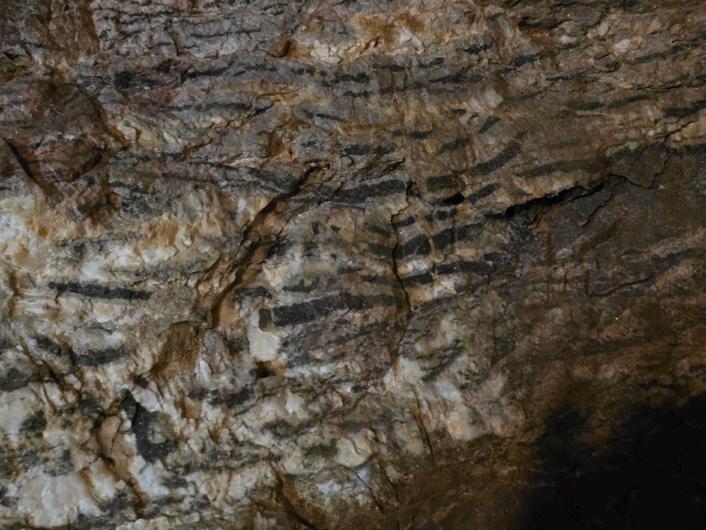



16 E
FIGURE 16: A) Zebra dolomite in the cave (Photo by Art Curtis). B) Formation known as “Bacon Rind” (Photo by Ron Parker). C) Cave formations in The Barn (Photo by Laura Wray). D) Exclamation Point view from tunnel in the cave (Photo by Rick Rhinehart). E) Calcite crust filing a void along a fault surface (Photo by Laura Wray).




ARCS (Achievement Rewards for College ScienCsts) FoundaCon advances science and technology in the United States by providing financial awards to academically outstanding U.S. ciCzens studying to complete degrees in science, engineering, mathemaCcs and medicine while conducCng cuMng edge research. ARCS views all fields of science – from life sciences to technological sciences – as necessary and important to the future development of our naCon and deserving of financial support. 100% of every dollar donated for scholar awards goes directly to fund ARCS scholars. Member dues cover all operaCng expenses. ARCS is the only all women’s organizaCon of its kind in the country.
Since its founding in 1958, the 15 chapters of ARCS have given more than $136 million to support undergraduate and graduate men and women majoring in the science, technology, engineering, mathemaCcs, and medicine (STEM). ARCS chapters allocate funds to eligible local universiCes approved by the ARCS FoundaCon NaConal Board based on their excellence in naConal rankings. Recipients need not be from the chapter area and are selected by the deans and department heads of the insCtuCons to help ensure the “best and brightest” are chosen. US ciCzens or lawful permanent residents are chosen without regard to race, creed, or gender.
Since it was chartered in 1976, the Colorado Chapter of ARCS has awarded over $6.6 million to 1302 students abending our 6 recipient schools: University of Colorado (CU) Anschutz Medical Campus, CU Boulder, CU Denver, CU Colorado Springs, Colorado State University, and Colorado School of Mines. In 2024 we awarded $7,500 to each of 52 scholars.
Beyond financial support, ARCS FoundaCon members take a personal interest in the scholars and scholar alumni. Members meet with them and learn about their research, challenges, and successes. These relaConships someCmes conCnue through their academic lives and careers.
Website: hbps://colorado.arcsfoundaCon.org/
ARCS FoundaCon Inc. Colorado Chapter P.O. Box 460874 Denver, Colorado 80246
To make a donaCon online:

“Science is a coopera-ve enterprise, spanning the genera-ons. It’s the passing of a torch from teacher to student to teacher. A community of minds reaching back to an-quity and forward to the stars.”
“To make any future that we dreamt up real requires crea-ve scien-sts, engineers and technologists to make it happen.”
Neil DeGrasse Tyson, ARCS Scholar Alumnus



FIGURE 16: F) “The Brain,” a microbially precipitated iron formation in the ceiling of The Barn (Photo by Laura Wray). G) Flowstone (Photo by Art Curtis). H) Stalactites on a Leadville dip slope (Photo by Peter Barkmann). I) “Popcorn texture” on a stalactite (Photo by Laura Wray). J) Rare column in The Barn (Photo by Laura Wray). K) Looking into The Barn, the last stop of the tour. (Photo by Ron Parker).



JULY 17, 2025
RMAG Coffee Hour
10am. Vibe Coffee and Wine, 1490 Curtis Street, Denver, CO 80202
JULY 19, 2025
RMAG Volleyball Get-together
Martin Marietta - West Division Office.Google Pin
JULY 26, 2025
Family Hike Series: Florissant Fossil Beds & Fossil Dig Florissant Fossil Beds National Monument, 15807 Co Rd 1Florissant, CO 80816
JULY 29, 2025
RMAG Happy Hour
Edgewater Beer Garden, 2508 Gray St., Edgewater, CO 80214
Lauren Thomas from Denver, Colorado
Piper Poe with SM Energy from Denver, Colorado
Jason Harms with Total Depth from Littleton, Colorado
William Parcell with the Department of Geology at Wichita State University form Bel Aire, Kansas
Brown Hawkins with GeoFlite Solutions LLC, from Arvada, Colorado
Jim Bock from Centennial, Colorado
Jeremy Rick with the Wyoming State Geologocial Survey from Fort Collins, Colorado
Joseph Moll is a student member from Downers Grove, Colorado

production company
confluenceresources.com
Confluence Resources is an upstream exploration and production company confluenceresources.com



Publish with…

Expanded geologic focus:
• Entire greater Rocky Mountain area of North America
• West Texas and New Mexico to northern British Columbia
• Great Plains and Mid-Continent region

Why contribute?
• Reach a broad industry and academic audience
• Quarterly peer-reviewed journal
• Permanent archiving includes AAPG Datapages
• Quick turn-around time
• Every subdiscipline in the geosciences
Email: mgeditor@rmag.org
https://www.rmag.org/publications/the-mountain-geologist/
